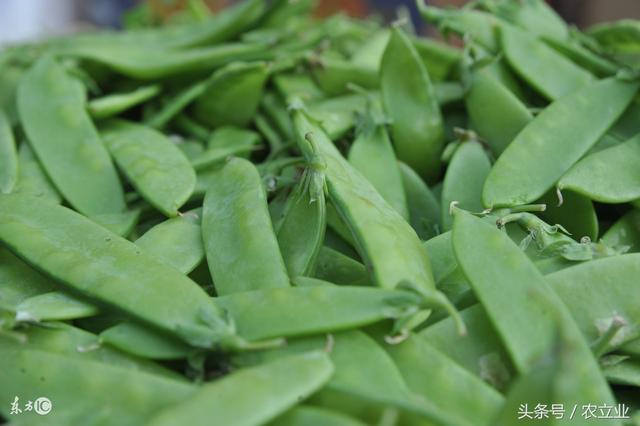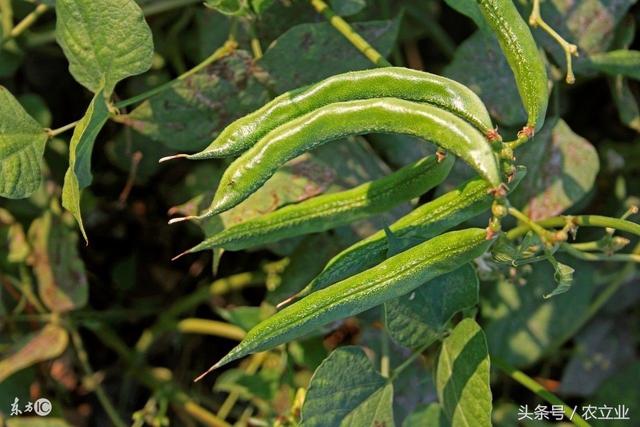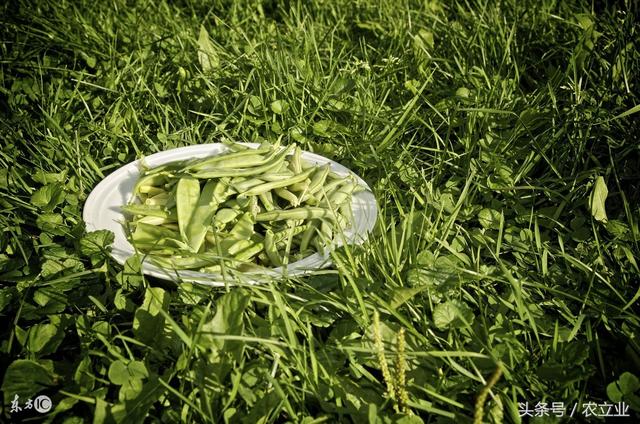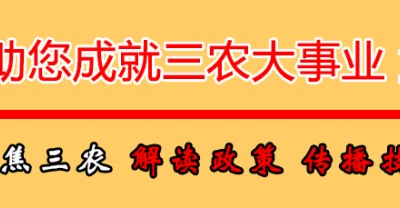Getting rich from agriculture: planting technology of Dutch beans in autumn!
[agriculture] multiple channels to promote "breeding and planting" technical materials, our friends in agriculture, rural areas and farmers are good helpers to get rich. Welcome to follow and forward!

Dutch beans, also known locally as peas, are eaten with tender pods as vegetables. It can be planted in autumn, winter and spring in our village, but the planting benefit is the best in autumn. generally, the yield per mu of high-yield planting can reach 750-1000 kg, and the output value can reach about 4000 yuan. it is one of the main crops to increase the income of farmers in our township. The planting techniques of Dutch beans in autumn are summarized as follows:
I. Variety selection
At present, the excellent Dutch bean varieties planted in production are mainly Taichung 11, Taichung improvement 603, Taichung improvement 604, Dadi 610 and other varieties (it is best to choose coated seeds). The pod size of each variety is different, in principle, it depends on the merchant's ordering requirements or market consumption habits.
II. Soil selection
Dutch bean is not strict to the soil, but it is convenient for drainage and irrigation, the content of soil organic matter is high, the light is good, the field with middle and upper fertility is better for early maturing and early rice field, and the flue-cured tobacco field can be selected after harvest.

Third, reasonably determine the sowing date
In autumn, the altitude of the Dutch bean planting area should be more than 500 meters, of which 500-600 meters above sea level should be sown from July 25 to August 1; 600-700 meters above sea level, the seeds can be sown from July 15 to July 20. Make full use of the advantages of high altitude and cool summer climate, sow as early as possible, strive to achieve high yield before the National Day, and improve planting efficiency.
IV. Soil preparation and fertilization
After the previous harvest, 50-75 kg of lime (especially flue-cured tobacco fields) and 2-2.5 kg of borax were sprinkled per mu, and then ridged by 1.1-1.2 m machine, and at the same time, the central ditch was opened to apply base fertilizer.
5. Sowing seeds
1. Seed treatment before sowing. Each kilogram of seeds was mixed with 35% carbosulfan dry powder 10 grams to reduce the harm to birds.
two。 Seeding quantity. The amount of seed used per mu is 3-3.5 kg.
3. Sowing method. Adopt double row hole sowing, plant spacing 20-30 cm, row spacing 20-25 cm, 4500-5000 holes per mu, 2-3 grains per hole, and cover 2 cm with fine broken Honda soil. After sowing, the border was sprayed with 1000 times of Jindur EC to inhibit the growth of weeds. If the weather is dry and the surface of the border is white, it is necessary to irrigate to 1/3 of the height of the border and then dry naturally to improve the emergence rate.

VI. Field management
1. Water management. Dutch beans require high soil moisture and air humidity, but they are not resistant to moisture, so they should keep the border soil moist, irrigate "horse race water" in case of drought, and clear ditches and drainage in time in case of rain.
two。 Set up a frame and tie up the vine. The stems of Dutch beans are soft and easy to lodge. When the seedling height is 20-25 cm, put the bamboo branch in the middle of the two rows, and insert a 2-meter-long stick or bamboo tail every 3 meters or so to enhance the supporting force of the bamboo branch. later, the vine will be wrapped with plastic rope for every 30 cm extension. V7. Fertilization
1. Base fertilizer. Combined with the whole border, 1500-2500 kg of fully mature farm manure or 75 kg of commercial organic fertilizer, 25 kg of superphosphate and 10-15 kg of potassium chloride were applied in the middle of the border.
two。 Top dressing. At seedling stage, 90 times urea solution of 1 ∶ was applied once to extract seedling fertilizer, and then topdressing once at intervals of 10 days. 15 ∶ and 15 ∶ per mu at budding stage
15 compound fertilizer 20-30 kg, potassium chloride 10 kg hole application. After entering the picking period, the seedlings will grow with 5 kg urea every 10-15 days.
15 ∶ 15 ∶ 15 compound fertilizer 10-15 kg was applied.
3. Extra-root topdressing. During flowering, 0.1% Mel 0.2% borax, 0.05% ammonium molybdate and 500 times of German Kangpu Shima blue foliar fertilizer were sprayed 2-3 times outside the root. During the picking period, Aiduosou, plant dragon and other liquid fertilizers were used for 2-3 times combined with pesticide spraying.

VIII. Disease and pest control
1. Root rot. At the initial stage of the disease, the root was treated with 50% carbendazim wettable powder, or 50% dimethazone soluble powder, or 1000 times of 1% Shenzinmycin suspension, once every 5-6 days for 2-3 times.
two。 Powdery mildew, rust. To give priority to prevention, at the initial stage of the disease, 3000 times of 25% nitrilazole EC or 1000 times of 25% ethoxylate were sprayed once every 7-10 days, 2-3 times in a row.
3. Pod borer. Alternately spray 24% fenoylhydrazide suspension 1000 times, or 5% chlorobenzamide suspension 800-1000 times, or 2.5% dichloromethyl EC 1500 times alternately during flowering, usually in the morning or evening, with emphasis on spraying.
(author: Anjie Township Agricultural Technology Station, Changting County, Liao Guifu)
Postscript: this headline specially publishes technical abstracts related to breeding and planting, mostly from major journals published over the years. And has indicated the author of the article, thank you here! If the infringement, please leave a message, we will delete it immediately within 24 hours! Thank you for your supervision and support.
- Prev

The rural lazy man planted Dutch beans and made his wife laugh.
Pan Dafu usually only tells us what to do at home, plays cards and drinks every day, likes to eat and is lazy, and the people in the village call him Pan Dazhong. It is said that a fool has a fool, and a lazy man has a lazy life.
- Next

Is it difficult to choose grape varieties?
First, select varieties according to the cultivated area. 1. Requirements for cold resistance. In our country, it is customary to draw a line at the junction of Anyang City, Henan Province and Handan City, Hebei Province.
Related
- Fuxing push coffee new agricultural production and marketing class: lack of small-scale processing plants
- Jujube rice field leisure farm deep ploughing Yilan for five years to create a space for organic food and play
- Nongyu Farm-A trial of organic papaya for brave women with advanced technology
- Four points for attention in the prevention and control of diseases and insect pests of edible fungi
- How to add nutrient solution to Edible Fungi
- Is there any good way to control edible fungus mites?
- Open Inoculation Technology of Edible Fungi
- Is there any clever way to use fertilizer for edible fungus in winter?
- What agents are used to kill the pathogens of edible fungi in the mushroom shed?
- Rapid drying of Edible Fungi

